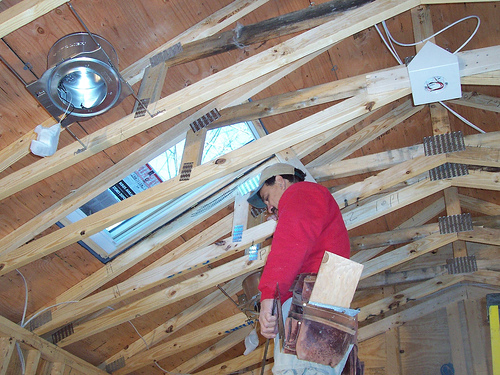Economy Watch: Homebuilders Haven’t Lost Confidence Yet
Builder expectations are modest but holding steady; investor relief over Greek election is short-lived.
By Dees Stribling, Contributing Editor
Homebuilders are hanging on to their modest level of confidence, according to the National Association of Home Builders/Wells Fargo Housing Market Index, which was released on Monday. The index increased 1 point to 29, the highest it’s been since May 2007.
Considering that a score of 50 and above represents optimism among homebuilders, the May uptick isn’t a vast improvement. But progress is progress. The component measuring current sales conditions rose two points to 32—its highest level since April 2007. The components describing sales expectations in the next six months and traffic of prospective buyers held steady at 34 and 23, respectively.
While the June [index] is in keeping with our forecast for gradually improving single-family home sales this year, recent economic reports that have shown some weakening in the pace of recovery likely factored into the marginal gain, said NAHB chief economist David Crowe noted. In addition, builders across the country continue to report that overly tight lending conditions and inaccurate appraisals are major obstacles to completing sales at this time.
Attention Turns Again to Spain, Italy
The sigh of relief inspired among investors and the rest of the world by Greece’s election seems to have lasted only a few hours. Now that a new Greek government seems to be in the offing, attention swung rather quickly on Monday to larger ill euro-zone economies, such as Spain and Italy.
Investors have made it clear lately that they believe those nations are risky propositions. By the end of the day on Monday, yields on both Spanish and Italian 10-year debt were headed skyward. Spanish debt ended the day at 7.16 percent, higher than it’s been in more than a year (in November, the yield briefly touched 6.7 percent, but has spent most of 2012 between 5 percent and 6 percent). As for Italian 10-year debt, yields stood at 6.08 percent at the end of the day on Monday. That’s lower than late fall, but the highest it’s been since the beginning of February.
The rest of June promises to be eventful in the euro zone. Its finance ministers are meeting later this week, a European Commission meeting follows, and all kinds of wild cards are possible as well.
Investors Wait for Fed Action
Wall Street was also underwhelmed by the outcome of the Greek election, and probably has moved on to guessing what the Fed might do later this week. The Dow Jones Industrial Average was down 25.35 points, or 0.2 percent, while the S&P 500 gained 0.14 percent and the Nasdaq was up 0.78 percent.
What will the Fed come up with during its two-day meeting? It’s all speculation at this point, but there are a number of eventualities that analysts consider more likely than others. Top of the list is a third round of quantitative easing, in the form of another round of bond buying. It’s been nearly a year since the last round, and like the rest of the country, the Fed may have grown tired of seeing the economy gather steam in the spring, only to lose it in the summer.








You must be logged in to post a comment.